NEW TO GARDENING
As you guys know, I am brand new to gardening. This is something that I’m so excited to share with my kids but if I’m being honest, I’m a little overwhelmed where to start.
- What’s the best veggies for beginners?
- What’s good for full sun?
- What kind of soil do I need to get?
- Am I supposed to add fertilizer?
- How far apart does everything need to sit?
- Do I need designated containers for each vegetable, or can everything go straight in the ground?
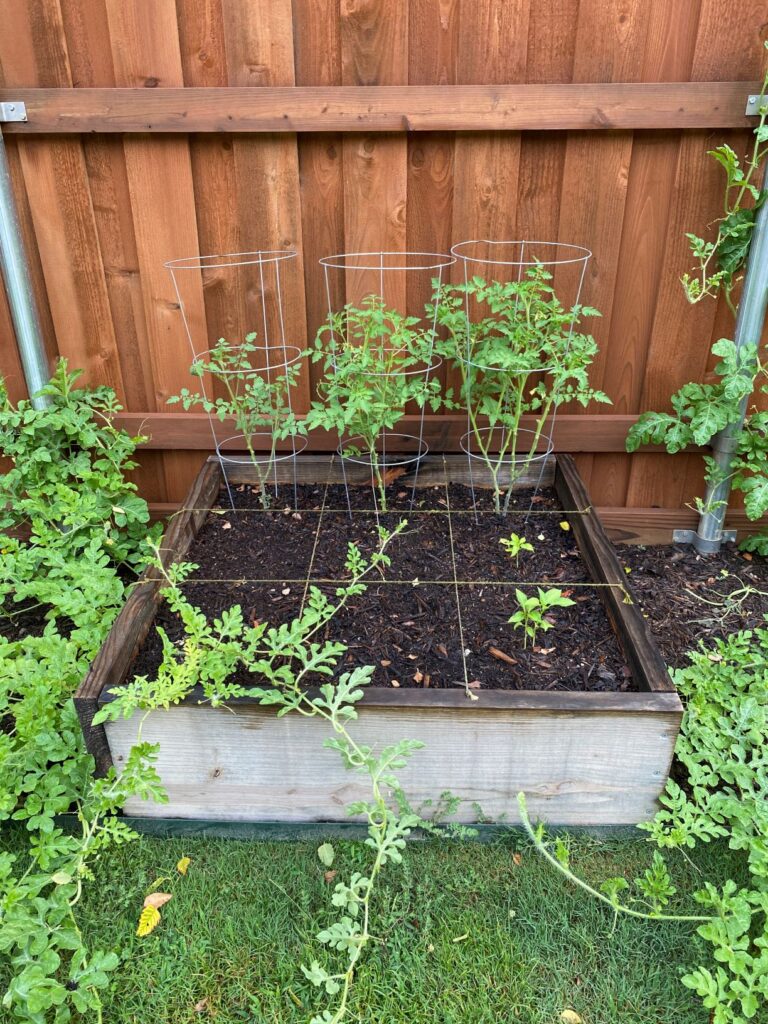
I know that I want to focus my initial efforts on vegetable gardening, then branch out from there. But even the amount of vegetable gardening information out there can be a little daunting. It seems like each vegetable has its own set of best practices and it’s just a lot to take in (even if you’re only planning to start with 3 or 4 things!).
FINDING THE METHOD
I first heard about the concept of Square Foot Gardening while I was watching a YouTube video about how to grow bunching onions. The channel referenced the Square Foot Gardening book’s seed starting guide. It basically tells you the ballpark range of when you should START planting your seeds indoors.
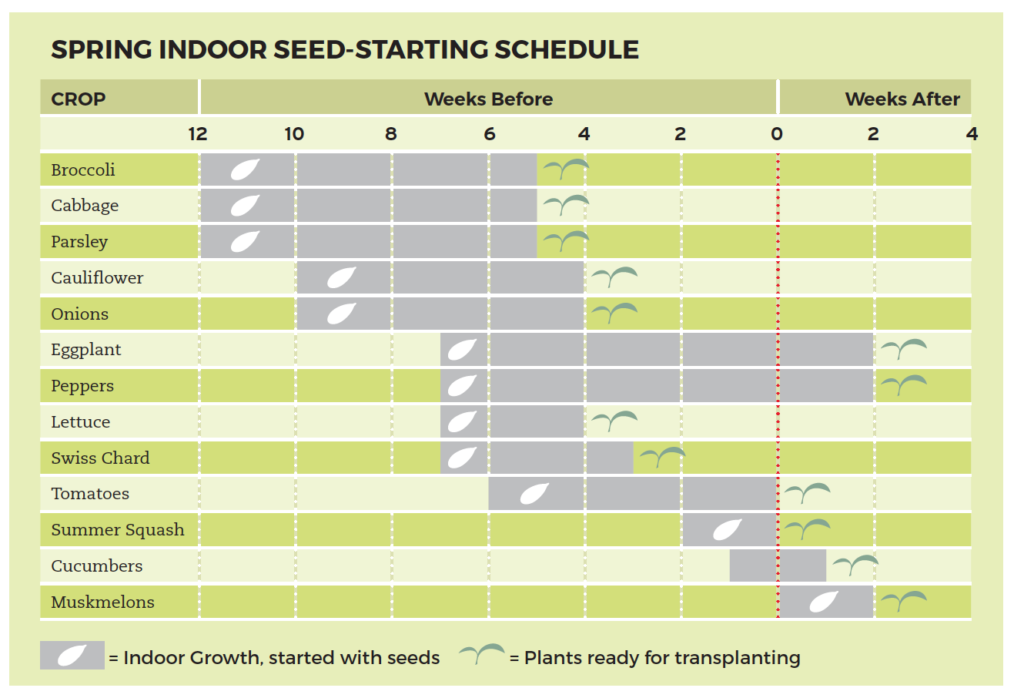
The name piqued my interest and for some reason I googled the book… what I stumbled upon is so much more than just a seed starting timeline – it’s a gardening revolution!
I purchased the eBook for the subject because I’m in the market for beginner gardening books anyways! I have to say that I am sold on the methodology and mission of this way of gardening.
**This post may contain affiliate links. At no additional cost to you, I will receive a commission when purchased through these links.
WHAT IS SQUARE FOOT GARDENING?
Square Foot Gardening is condensing the space that typical row gardens take up by planting everything in a neatly uniformed 1-foot by 1-foot square. The method was invented by Mel Bartholomew in the mid-1970s, after the retired engineer wanted to take up the hobby of gardening.
- He was stumped on why gardeners plant in rows three feet apart, leaving wasted space and room for weeds
- He didn’t understand why gardeners plant so many seeds, only to “thin them out later” – why grow more than you need?
- He didn’t agree with using so much fertilizers and weed maintenance
So he got started gardening and after a series of trial and error, he found solutions to the above questions and challenges. The result is Square Foot Gardening and people have been doing it ever since!
Honestly, seeing pictures of WHAT it is probably explains it best
10 Principles of Square Foot Gardening:
- Vegetables CAN be tightly spaced – you can get a lot more produce than you think! In fact, Mel preaches that a single 4 x 4-foot raised bed can grow enough vegetables to feed your entire family! Bye bye needing rows and rows to grow different kinds of crops all spaced out. It’s all about growing different kinds of things closely together.
- Instead of growing out, as traditional gardening does… GROW UP (when possible and depending on the plant). This encourages gardens to incorporate trellis structures that allow vining vegetables to grow upwards. I also think this looks really cool and adds more aesthetics to your garden.
- Use Mel’s Mix instead of traditional garden soil. I’m super grateful for this principle because this was something that stressed me out. Apparently this mixture was invented and perfected after he experimented with different kinds of soil. Mel’s Mix is the universal winner for pretty much all plants. It is composed of three parts –
- 1/3 peat moss
- 1/3 coarse vermiculite
- 1/3 blended compost
- Garden close to your home so that your can enjoy looking at it and so that it’s not so much of a chore to tend to it! This is great if you have limited space, but also sounds nice and convenient.
- Grow Shallow – you really only need 6 inches… I’m curious about this one because I always thought vegetables like potatoes and carrots needed a bigger space. But I’m here to learn and try for myself.
- No Fertilizer Necessary – as mentioned above, the winning mixture of soil will naturally take care of everything the plants need to grow 😊 One and done – thank you very much.
- Keep aisles between boxes narrow (at about 3 feet apart). This is great for keeping space tight and good for gardeners with small yards.
- Don’t waste seeds! Square Foot Gardening tells you to be “stingy with your seeds” because it seems counter-productive to plant a lot of seeds only to thin them out later. This method maximizes the use of your seed packet and proves that a single packet can last for two or more growing seasons when done correctly.
- Plant in squares! The grids are a keystone to the method. The shape of the garden can be whatever you want, but the 1-foot by 1-foot squares are critical. I am obsessed with how orderly everything looks.
- Rotate crops for maximum yield. You can plant the same crop twice or swap in a new crop later in the season.
SQUARE FOOT GARDENING AND KIDS
Square Foot Gardening actually has an entire book dedicated to gardening with children.
I plan to purchase it very soon so that I have a physical copy to highlight and keep on hand. However, in the version I do have, it talks about how much kids will enjoy gardening. It recommends giving each kid their own 3 x 3-foot box because it’s the perfect size for children to reach all the squares.
How TO start a Square Foot Garden?
SELECT SQUARE FOOT GARDEN LOCATION
Similar to most gardening tips, the square foot gardening method stresses the importance of good sunlight. As mentioned above, you want something close to your house and a location that gets about 6-8 hours of sunlight each day.

SQUARE FOOT GARDEN CONSTRUCTION
Square Foot Gardening doesn’t want to complicate things. Simply get 4 pieces of lumber (that’s at least 6” deep), screw together with 2” screws, and attach a lattice on top to designate your 1-foot plots.
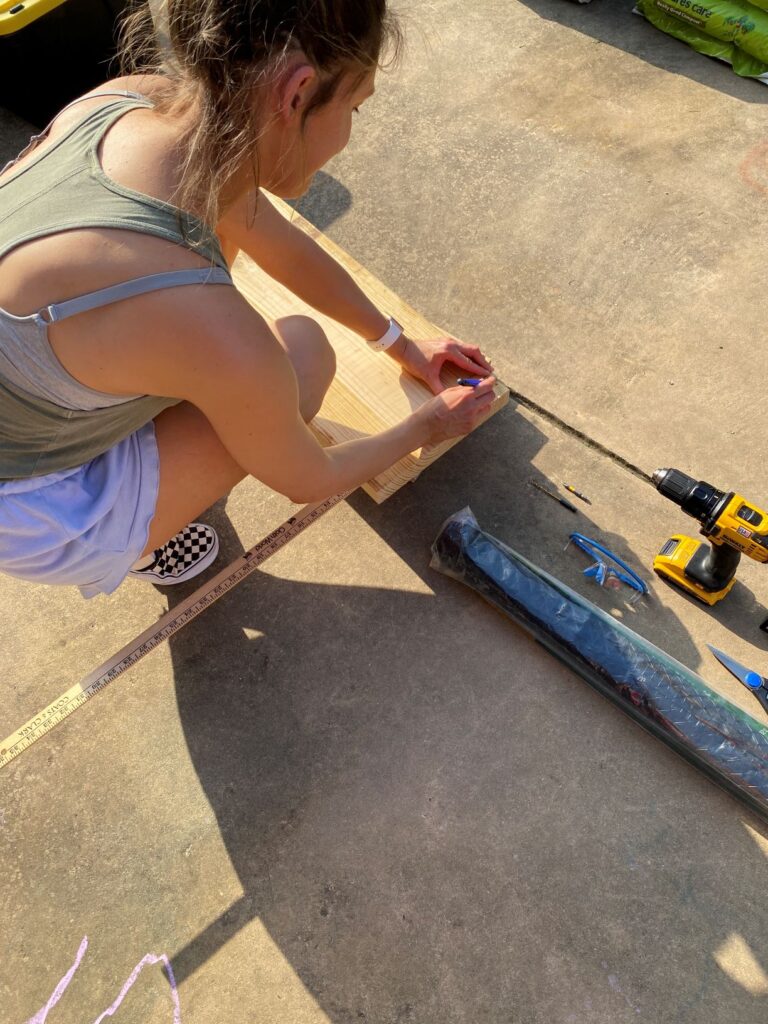
NEXT STEPS
I’m so excited to try this method of gardening! I think it looks awesome when the garden is fully bloomed. It’s really neat to see a bunch of different things all growing together in close proximity… but it doesn’t look like a cluttered mess! It actually looks super clean and organized thanks to the lattice grids. Basically, it is pleasing to the eye and I’m a fan.
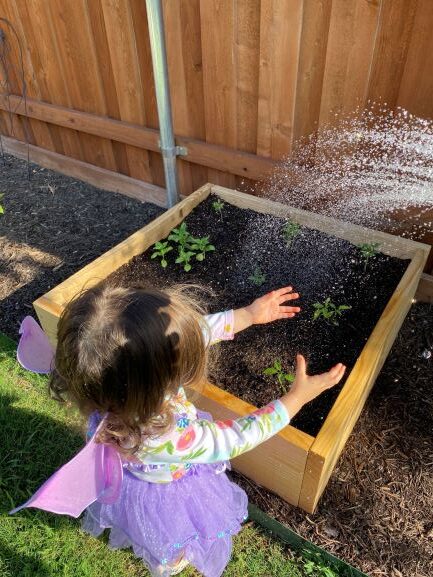
I’m also happy that I found something that seems doable for beginners. I like that this method doesn’t over complicate gardening different vegetables at once. I like how it breaks down that for one plot you can grow 16 carrots and for the same amount of space, you can grow one melon. Obviously, different plants have different requirements for space – but that doesn’t mean that they can’t sit next to each other like a little happy family. It’s logical to me to simply adjust the quantity planted.
I like that the soil formula is a one-size-fits all approach! Some of the YouTube gardening videos I started watching would tell me that mint leaves liked a certain type of soil, while radishes like another, etc. It’s much simpler for me to buy three things – compost, vermiculite, and peat moss – mix everything together and have something that will work across the board every time.
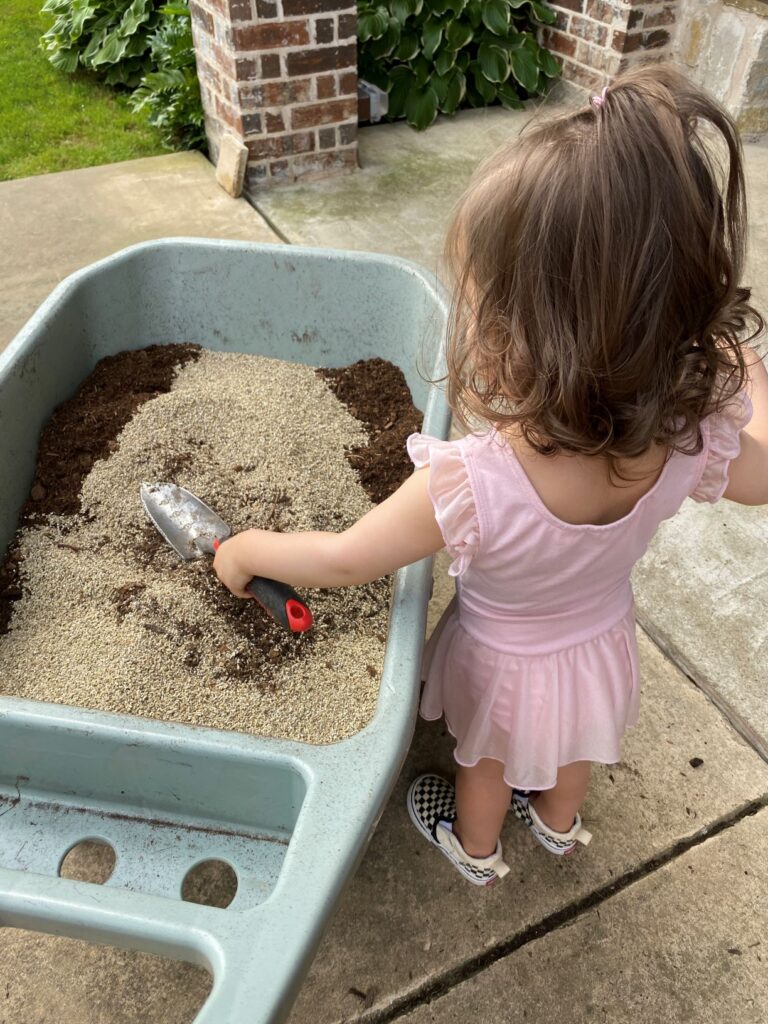
I agree with the principles of not wasting food, seeds, water, and time! I think this will ensure that I’m a responsible and happy gardener. If everyone gardened this way, how cool would that be?
I’m excited to start with three 3 x 3 children-sized gardens (9 squares each; 27 squares total)! I plan to give each of my girls their own box where they can pick out the veggies they want to plant. I think it’ll be really cool to give them this choice and involve them in the planning portion of our garden. I imagine they’ll love the responsibility of tending to their OWN garden.
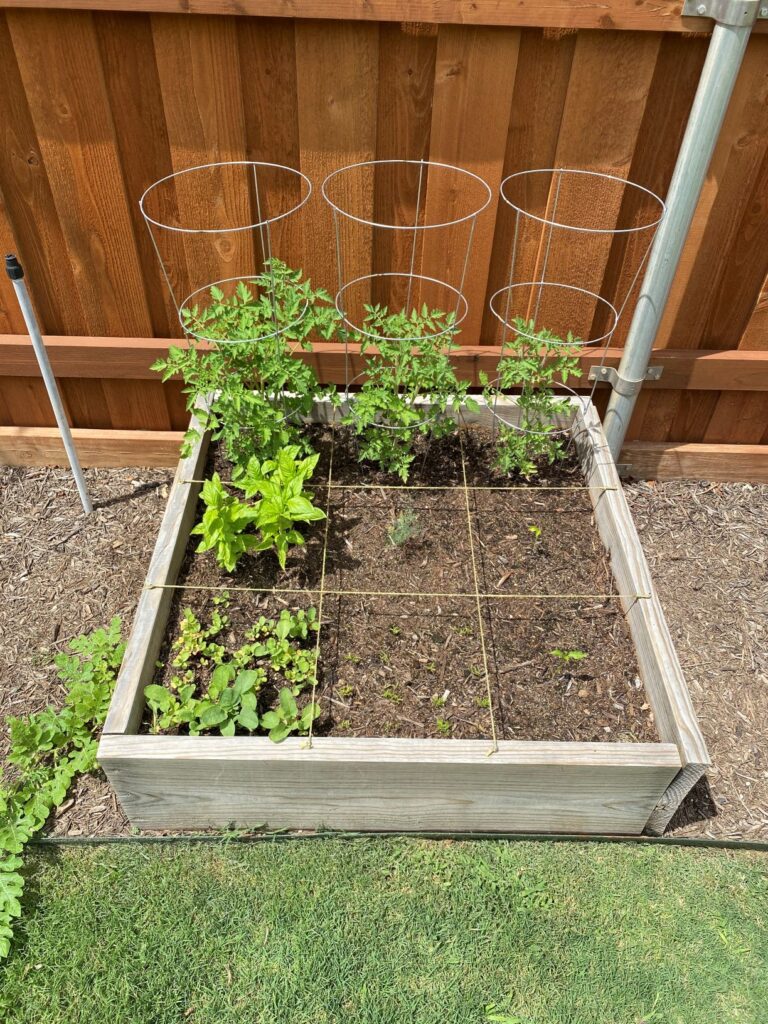
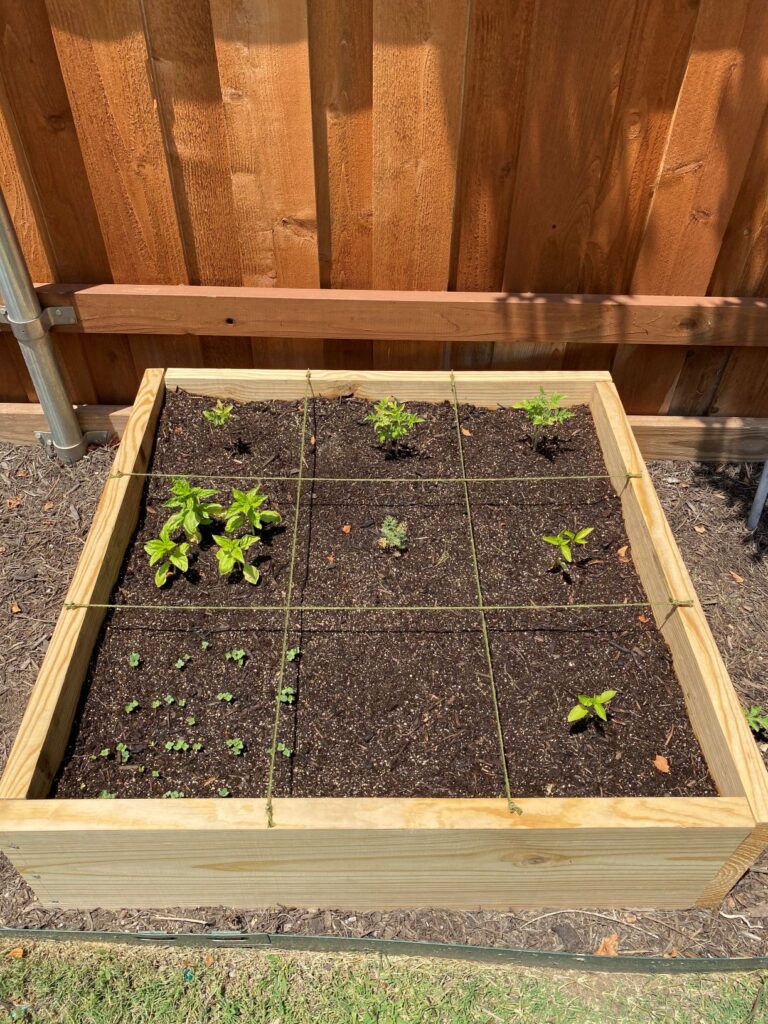
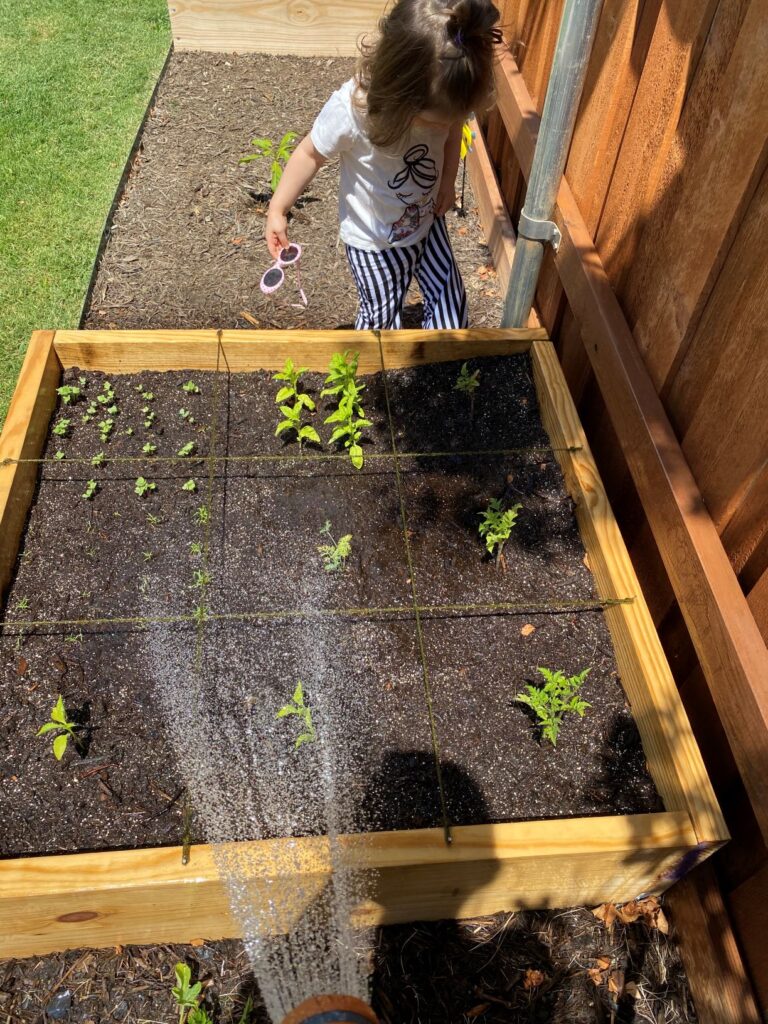
1 Comment on EASY BACKYARD GARDEN WITH SQUARE FOOT GARDEN METHOD
Comments are closed.